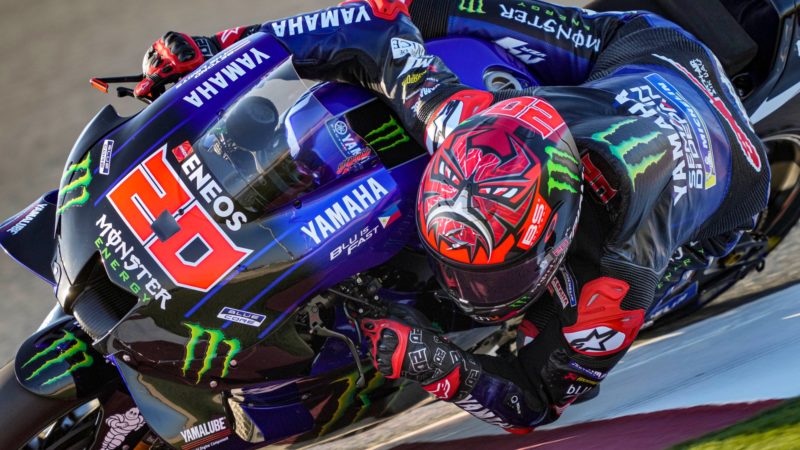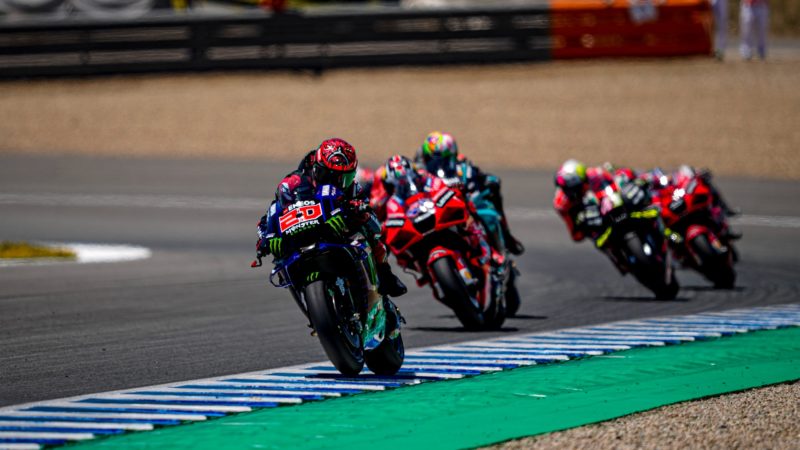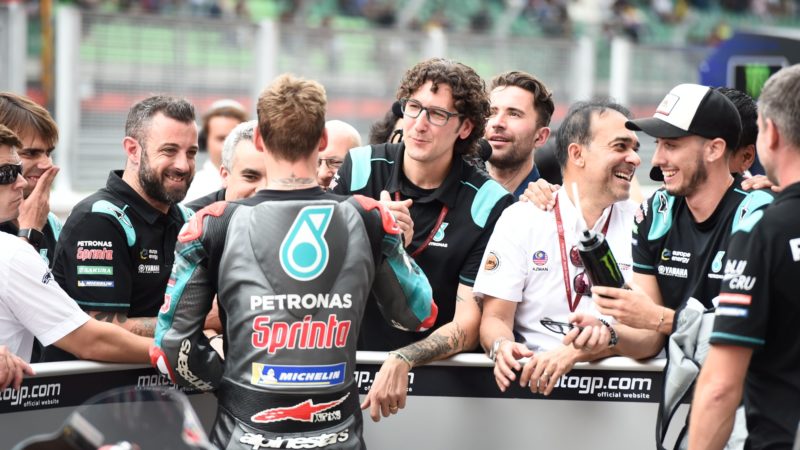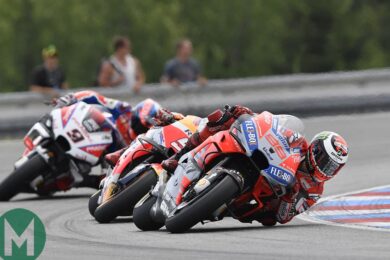And dancing around on the motorcycle also helps you get the most out of the tyres without asking too much, by reducing load and stress on the front or rear tyre, as appropriate.
Comparing Quartararo’s technique to Marc Márquez’s is just as valid as comparing it to Lorenzo’s, despite the fact that they ride very different motorcycles.
It’s no coincidence that Márquez is also super-moveable aboard his Honda RC213V and it’s no coincidence Quartararo’s greatest strength is his ability to extract the maximum from Michelin’s front tyre, which was Márquez’s greatest strength in his six MotoGP championships.
Of course, Quartararo – like Márquez – needs the bike to help him do that.
“Last year’s bike had no feeling when you turned into corners, so you didn’t know if you would crash or not and you went wide,” says Quartararo. “This year I can feel the limit and when I want the bike to turn it turns.”
The 22-year-old is also adaptable in this area, again like Márquez. How he attacks a corner depends on many factors, from corner layout to the available grip and much in between. Sometimes he finds his speed in upright braking, other times through braking deep into the corner and sometimes with a bit of both
Gubellini again. “Braking is one of Fabio’s strong points, but the best thing is that while many riders are strong on the brakes or strong on corner speed, Fabio can either have both at the same time, or if he can’t find the speed in braking he will find it with corner speed and vice versa. This is so important and helps him to be more consistent at different tracks and in different conditions.”
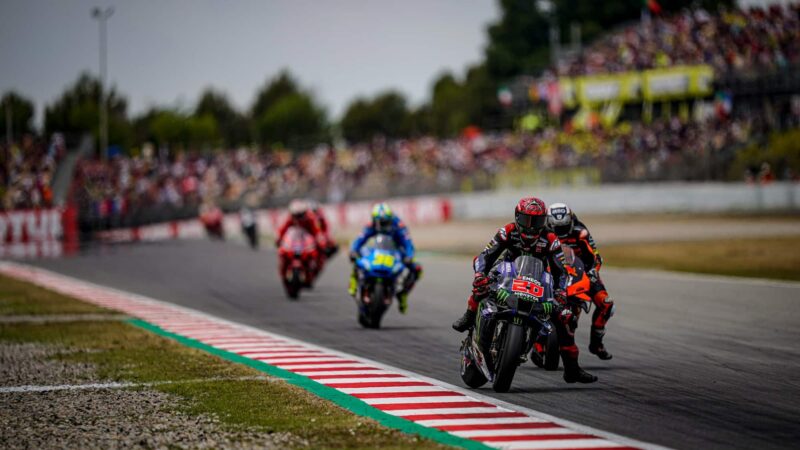
Quartararo out of shape on the brakes at June’s Catalan GP
Yamaha
Quartararo and his Italian crew chief have developed a keep-it-simple strategy for race weekends: don’t keep changing the set-up and let other riders try any new kit offered by Yamaha, so that your bike stays as unchanged as possible from one track to the next and from one session to the next.
That way the rider becomes more and more familiar with the bike until he reaches that point where he knows what the bike is going to do before it does it.
This is the state of grace we know as confidence. And it isn’t something hazy or mythical, it’s a feeling that comes from the technical achievement of adjusting the motorcycle so that it talks to the rider. Once again, it’s technology and emotions intertwined, it’s what man and machine in harmony is all about.
Gubellini’s core expertise is electronics. He started out as a data-acquisition technician in the final years of the 500s, then worked on developing electronics strategies in the early years of MotoGP. He has been a crew chief since 2012, with Michele Pirro, Scott Redding, Stefan Bradl, Tito Rabat, Franco Morbidelli and now Quartararo.
So it’s no surprise that he prefers playing with maps to clickers.
“Our style is trying to keep the bike the same as before,” he explains. “We try to work in different areas – it’s very important to fix and manage the electronics. Also the key point, especially with the Michelins, is to let the tyres work in the correct range. If we can’t fix a problem with the electronics or the tyres then we think about the setting. It’s completely different from the past but it’s how we like to work.”
“Also, this year Fabio has more experience so he can ride around any problems. When you race a motorcycle you always have some problems, so this is very important.”
Of course Quartararo will run into difficulties at some races. The next two at the Red Bull Ring could be complicated for the M1, so he may have to switch into damage-limitation mode there.
Meanwhile, technology and emotions will most likely continue to enjoy a very different kind of relationship on the other side of the factory Yamaha garage.
